Finding Your Perfect Workout Routine: A Step-by-Step Guide
Creating a workout routine that fits your lifestyle and fitness goals can be a game-changer. However, the abundance of information available can make it challenging to know where to start. This step-by-step guide will help you design the perfect workout routine tailored to your needs, ensuring you stay motivated and see results.
Step 1: Define Your Fitness Goals
The first step in creating a workout routine is identifying your fitness goals. What do you want to achieve? Goals can vary widely, from losing weight and building muscle to improving cardiovascular health or enhancing overall fitness. Your goals will dictate the structure and content of your workout routine.
Common Fitness Goals:
- Weight Loss: Focus on high-intensity interval training (HIIT) and cardio exercises.
- Muscle Building: Prioritize strength training with progressive overload.
- Endurance Improvement: Include steady-state cardio and endurance-based workouts.
- Flexibility and Mobility: Incorporate yoga, Pilates, and stretching routines.
Step 2: Assess Your Current Fitness Level
Understanding your current fitness level is crucial in designing an effective workout plan. Conduct a self-assessment or consult a fitness professional to evaluate your strength, endurance, flexibility, and cardiovascular health. This will help you set realistic goals and choose appropriate exercises.
Self-Assessment Tips:
- Strength: Perform a max rep test (e.g., push-ups, squats).
- Endurance: Measure how long you can sustain a particular exercise (e.g., running, cycling).
- Flexibility: Test your range of motion with basic stretches.
- Cardiovascular Health: Check your resting heart rate and recovery rate post-exercise.
Step 3: Choose the Right Type of Exercise
Based on your goals and fitness level, select the types of exercises that will be most beneficial. A well-rounded routine typically includes a mix of cardio, strength training, and flexibility exercises.
Exercise Categories:
- Cardio: Running, cycling, swimming, rowing.
- Strength Training: Weightlifting, bodyweight exercises, resistance bands.
- Flexibility and Mobility: Yoga, Pilates, dynamic stretching.
Step 4: Determine Your Workout Frequency
Decide how often you can realistically work out each week. Consistency is key, so choose a frequency that fits your schedule and allows for recovery.
Recommended Frequency:
- Beginners: 3-4 times per week.
- Intermediate: 4-5 times per week.
- Advanced: 5-6 times per week.
Step 5: Structure Your Workouts
Plan the structure of each workout session. A typical workout should include a warm-up, main workout, and cool-down.
Workout Structure:
- Warm-Up (5-10 minutes): Light cardio and dynamic stretches.
- Main Workout (30-60 minutes): Depending on your focus (e.g., strength, cardio, flexibility).
- Cool-Down (5-10 minutes): Gentle stretching and breathing exercises.
Step 6: Create a Weekly Workout Schedule
Develop a weekly schedule that balances different types of workouts and allows for rest days. This will ensure all muscle groups are worked and you avoid overtraining.
Sample Weekly Schedule:
- Monday: Upper Body Strength Training
- Tuesday: Cardio (e.g., running or cycling)
- Wednesday: Lower Body Strength Training
- Thursday: Flexibility and Mobility (e.g., yoga)
- Friday: Full Body HIIT
- Saturday: Rest or light activity (e.g., walking)
- Sunday: Rest
Step 7: Track Your Progress
Monitoring your progress is essential for staying motivated and making adjustments to your routine. Keep a workout journal or use a fitness app to log your exercises, weights, reps, and sets.
Tracking Tips:
- Set short-term and long-term goals.
- Regularly review your progress.
- Adjust your routine as needed based on your progress and any changes in your goals.
Step 8: Stay Motivated
Staying motivated can be challenging, especially when progress seems slow. Find ways to keep yourself engaged and excited about your workouts.
Motivation Tips:
- Set Realistic Goals: Break larger goals into smaller, achievable milestones.
- Find a Workout Buddy: Exercising with a friend can make workouts more enjoyable and provide accountability.
- Mix It Up: Vary your exercises and try new activities to prevent boredom.
- Reward Yourself: Celebrate your achievements with non-food rewards.
Step 9: Listen to Your Body
Pay attention to how your body feels during and after workouts. If you experience pain (not to be confused with the discomfort of exertion), it may be a sign you need to adjust your routine or take a break.
Listening Tips:
- Aches and Pains: Identify the difference between normal muscle soreness and pain indicating injury.
- Recovery: Ensure adequate rest and recovery time between intense workouts.
- Hydration and Nutrition: Support your workouts with proper hydration and nutrition.
Conclusion: Start Your Fitness Journey
Creating the perfect workout routine is a dynamic process that requires regular adjustments and a commitment to your goals. By following this step-by-step guide, you'll be well on your way to developing a routine that fits your lifestyle and helps you achieve your fitness objectives.
Remember, the most important aspect is to start and stay consistent. Enjoy the journey, celebrate your progress, and keep pushing towards your fitness goals!
FAQs
Q: How long should my workouts be? A: Workouts can range from 30 to 60 minutes depending on your goals and fitness level. Beginners might start with shorter sessions and gradually increase the duration.
Q: Can I combine different types of exercises in one workout? A: Yes, combining cardio, strength, and flexibility exercises can provide a well-rounded workout and help achieve multiple fitness goals.
Q: How important are rest days? A: Rest days are crucial for muscle recovery and preventing overtraining. Ensure you incorporate at least one to two rest days per week.
Q: Do I need special equipment to work out effectively? A: While equipment can enhance your workouts, many effective exercises can be done with just bodyweight or minimal equipment like resistance bands and dumbbells.
Q: How do I know if I'm progressing? A: Track your workouts and regularly reassess your strength, endurance, and flexibility. Visible changes in your physique, improved performance, and achieving your set goals are indicators of progress.

